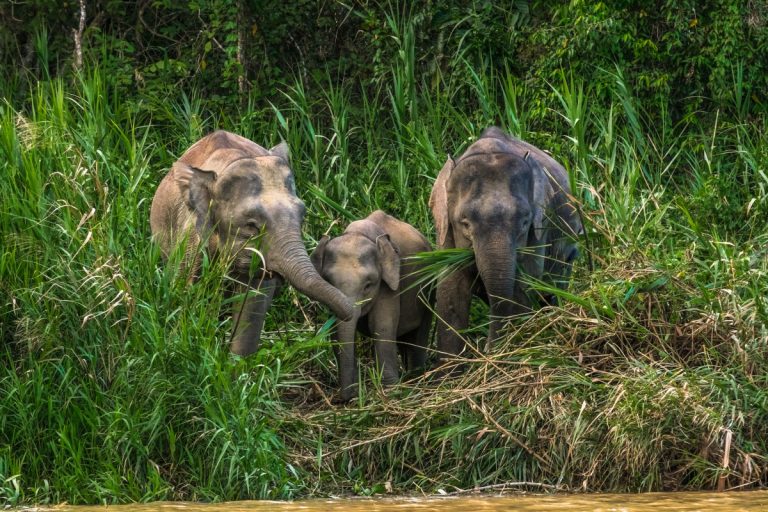
Social media is a useful tool for more than just staying in touch with friends. It is employed for news, advertisement and promotion among other things.
But what about wildlife conservation?
A student at Murdoch University in Australia is utilising social media to do just that.
Obelia Walker, an Honours student in the School of Veterinary and Life Sciences, is investigating how tourist photographs of pygmy elephants could be used to help their conservation and management.
The project has been running for three months in Sabah, Borneo, as Walker works with collaborators Sakau Rainforest Lodge, Borneo Eco Tours, BEST Society and the Universiti of Malaysia Sabah.
Teamed with tour guides and visitors of the Lower Kinabatangan River, Walker is encouraging people to post their photographs of the rare elephants to social media. Participants in the project are told to hashtag #PicMeElephant on their post and geotag it.
“Bornean pygmy elephants are not only the smallest but also one of the least researched of all elephant species, and are endangered with an estimated population of less than 2,000 left in Sabah, so there is a real need to collect data,” said Walker.
“Main threats to their survival include habitat loss and human-elephant conflicts, including three isolated instances of poaching in the past 12 months.”

#PicMeElephant – the clever hashtag which might just save the endangered Pygmy Elephant. Source: Obelia Walker.
A similar idea has previously been used in elephant research in Africa. The geotags contain the geographical co-ordinates which allow Walker to track the exact location of the elephants at the right time.
“The best way of conserving the elephants is by mapping and tracking them through their habitat, so that we can understand their ranges and protect them.”

Obelia Walker, the woman behind the project. Source: Obelia Walker.
The use of social media is a cost-effective method which does not meddle with the elephants nor take much time for tourists.
“The feedback I’ve had from the tourists and naturalists so far has been extremely positive,” she said. “Guests have been very enthusiastic about contributing to the project by uploading their pics, usually when they return home from their travels in Sabah.”
Walker collects comments from tourists, often via captions on their images, to try to understand the significance of the elephants to ecotourism in the region. This, she hopes, will inform future funding and research.
The Managing Director of Borneo Eco Tours, Albert Teo, said the project is important for preserving the life of the pygmy elephant and of ecotourism in Sabah.
“More information will also increase our appreciation of our natural resources and the need to conserve them for the sustainability of the livelihood of the local community. We can’t manage what we don’t know,” said Teo.
There are hopes that the same idea could be applied to other species in Borneo like crocodiles and orangutans.
Walker will return to Australia later this month. She has high hopes, however, that the project will continue to thrive without her presence in Borneo.
“Looking to the future, we hope to explore using photo identification techniques with the photos we have collected through Flickr,” Walker told Study International.
“This pilot project aimed to maximise involvement from tourists and guides and now that we are starting to build a large enough data set, it will be exciting to begin tracking the elephants and mapping habitat usage.
“There is also no reason why this approach couldn’t be applied to other species, and this has been suggested by tour guides, particularly for other members of the “Borneo Big 5” such as the crocodile and orangutan.”
Liked this? Then you’ll love…
Edinburgh Uni vets helped amputate 3kg tongue from bear
US: Students want uni to stop breeding dogs with muscular disease







